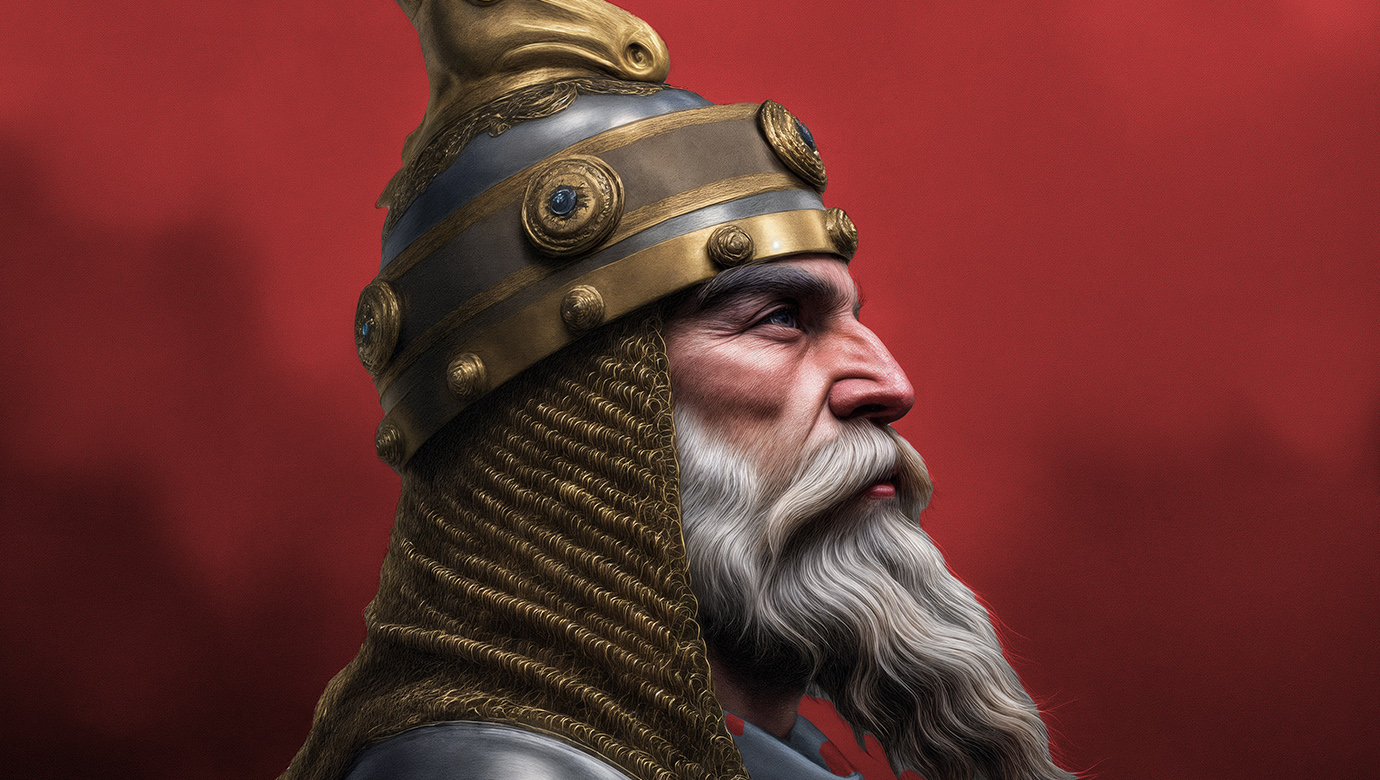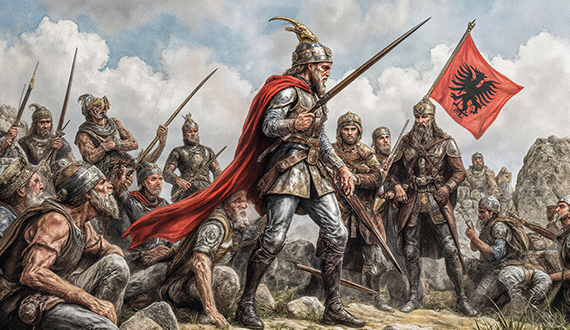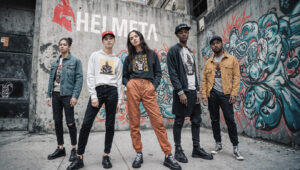
Skanderbeg: The Legend Behind the Icon
In Albanian homes, schools, and hearts — one name stands above all: Skanderbeg. His statue rises in the center of Tirana. His helmet, crowned with a goat’s head, is a national symbol. And his story? A legacy of resistance, courage, and unity.
But who was Skanderbeg beyond the sword and statue? And why does his name still echo today — not just in history books, but on clothing, in music, art, and streetwear?
The Man Behind the Myth
Born as Gjergj Kastrioti in 1405, Skanderbeg was the son of a noble Albanian family. As a child, he was taken by the Ottoman Empire and raised to be a soldier in their elite military corps. He rose quickly, earning the name Iskender Bey (Skanderbeg), meaning “Lord Alexander” — a nod to Alexander the Great.
But his loyalty to the Ottomans would not last forever.
In 1443, Skanderbeg broke away from the empire, returned to Albania, and raised his family’s flag — the double-headed eagle — in Krujë, declaring Albanian independence and launching a decades-long resistance against one of the most powerful empires of the time.

A Warrior of Unity and Resistance
For 25 years, Skanderbeg led a small, outnumbered army that defeated wave after wave of Ottoman invasions. His leadership united the often-divided Albanian tribes, and his military genius won the respect of European powers.
To this day, he’s celebrated not just for his victories, but for what he stood for:
Freedom, faith, unity, and the right to self-determination.
More Than a Military Hero
Skanderbeg wasn’t just a fighter — he was a strategist, a diplomat, and a symbol of identity. He kept Albania independent during a time when the rest of the Balkans were falling under Ottoman control. His story inspired uprisings, poems, songs, and legends across Europe.
And even today, his image continues to inspire.
The Icon in Modern Culture
You’ll see Skanderbeg’s likeness in tattoos, murals, and of course — fashion. His helmet, with its distinctive goat horns, is not just a relic of the past. It’s a statement of pride and resistance.
In our designs at Helmeta, Skanderbeg represents more than a historical figure — he’s a reminder that true strength comes from knowing who you are and standing for what you believe in.
Wearing a shirt or cap with his image or the iconic double-headed eagle isn’t about nostalgia — it’s about claiming your identity in a world that often tries to blur it.
Skanderbeg Lives On
Today, Albanians across the globe carry Skanderbeg’s legacy — whether it’s in their family stories, their language, or the symbols they wear. His fight may have ended centuries ago, but the values he stood for still resonate:
Courage. Unity. Freedom. Honor.
So next time you see the eagle, the goat-headed helmet, or his name — remember:
It’s not just a symbol.
It’s a legacy.




Add comment
You must be logged in to post a comment.